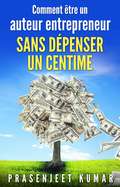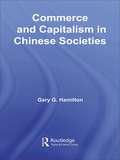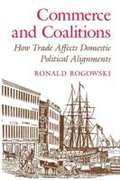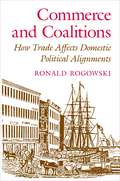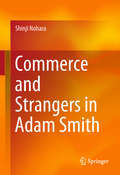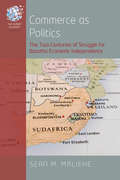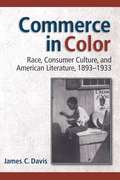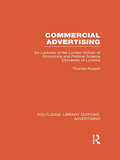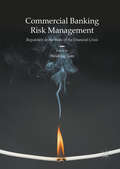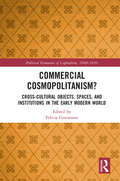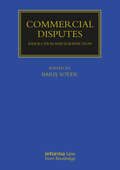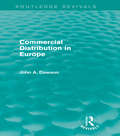- Table View
- List View
Comment traduire ses livres sans dépenser un centime
by Prasenjeet KumarVous vous souvenez de «The Alchemist» de Paulo Coelho ? Serait-il en train d'établir un record du monde Guinness s'il ne s'était pas vendu à plus de 65 millions d'exemplaires dans 67 langues différentes ? Connaîtriez-vous la Bible, si elle n'était pas traduite de l'hébreu dans lequel elle a été écrite à l'origine, d'abord en grec, puis en latin, et maintenant dans plus de 450 langues différentes ? L'histoire a prouvé la puissance de l'écrit, mais les traductions de ces œuvres puissantes peuvent être tout aussi significatives. Ainsi, si vous pouviez traduire votre best-seller de l'anglais vers différentes langues du monde, vous pourriez atteindre des marchés plus récents, inexploités et inexplorés dont vous ignoriez béatement l'existence. Cela pourrait également être, comme le conseillent les experts, un excellent moyen de «réorienter votre travail» et de tirer le meilleur parti du contenu que vous avez déjà rédigé. MAIS ATTENTION, CELA POURRAIT VOUS COÛTER DES MILLIERS DE DOLLARS. * Si vous pouvez vous le permettre, cela peut être bon. Mais le plus risqué dans cette entreprise est que les ventes de vos livres dans toutes ces langues exotiques pourraient ne jamais vous permettre de récupérer ne serait-ce que le coût de la traduction. Cela ferait de cette entreprise un effort voué à l'échec ab initio, n'est-ce pas ? * Et si vous êtes un débutant, un auteur inconnu et en difficulté, alors cette voie totalement inabordable et coûteuse n'est certainement pas pour vous. * Il y a un autre problème. Il se peut que vous ne puissiez pas joindre des traducteurs expérimentés si vous n'êtes pas un auteur «connu» sur le marché français. * Mais, dans l'alternative, si vous contactez ensuite une personne moins bien établie, comment vous assurer que la traduction est de bonne qualité ? Une situation sans issue, n'est-ce pas ? C'est pourquoi
Comment travailler de chez soi et gagner de l’argent
by Laura Dinraths Sam KernsLorsque vous étiez jeune, je parie que vous n'imaginiez pas que vous vous réveilleriez tous les matins pour vous rendre dans l'entreprise d'un autre et travailler pendant des heures pour pouvoir contribuer à ses rêves. Je suis certain que vous ne vous attendiez pas à ce que votre accomplissement le plus important soit de permettre à un autre de vivre le genre de vie dont vous avez toujours voulu. Ou que vous contribueriez à envoyer ses enfants à la fac, à l'aider à s'acheter une nouvelle maison, à lui permettre de passer ses vacances en Europe ou à financer sa retraite. Mais si vous travaillez pour un autre, c'est exactement ce que vous faites. Je suis certain que vous ne serez pas surpris d'apprendre que l'entreprise pour laquelle vous travaillez existe pour gagner de l'argent. Mais ce qui pourrait vous surprendre, c'est le montant qu'elle se fait sur votre travail. Toutes ces longues heures que vous passez au bureau pour obtenir une maigre augmentation à la fin de l'année ? C'est l'entreprise qui encaisse. N'est-il pas temps de travailler vers la construction de vos propres rêves ? C'est là que ce livre intervient. Contrairement à d'autres types d'entreprises, il est possible de travailler de chez soi avec très peu d'investissement et aucune formation universitaire. En fait, les dix idées d'entreprises listées dans ce livre peuvent toutes être lancées avec peu ou pas d'argent, sans formation poussée, et peuvent effectivement être lancées demain matin à votre réveil si ça vous chante. Alors, vous êtes prêt à poursuivre vos rêves ?
Comment trouver un emploi rapidement et facilement
by Bernard LevineSi vous n'avez pas de réponse pour vos demandes d'emploi..... Si vous êtes frustré d'être rejeté à de nombreuses reprises.... Alors, ce livre sera le miracle de votre vie. Laissez-moi vous aider et vous montrer une bien meilleure façon de trouver un emploi. Nous n'allons pas faire ce que tous les autres font pour essayer d'obtenir un emploi. Nous suivons une voie très différente pour que vous trouviez un emploi. Si vous suivez les secrets de ce livre, vous réussirez à trouver un emploi rapidement et facilement.
Comment écrire un Blog, Comment gagner sa vie en Bloguant
by Richard G Lowe Jr Laura DinrathsC’est un art d’écrire un article qui encourage le lecteur à prendre la décision d’agir. Voici la vision étroite du livre que vous lisez en ce moment sur votre Kindle. Vous apprendrez à créer un article qui intéresse le lecteur, l’interpelle, l’informe, et l’entraîne à prendre une décision à la fin de sa lecture. Le livre que vous lisez pour le moment décrit la méthode que j’utilise pour créer des articles de blogs dont l’intention spécifique est de pousser le lecteur du moment où il clique sur le lien jusqu’à ce qu’il clique sur le bouton ‘acheter’ ou ‘souscrire’ au bas de la page. Vous apprendez : * Comment créer un titre qui attire des lecteurs vers votre article * Quoi inclure au-dessus de la ligne de flottaison * Comment ajouter des déclencheurs émotionnels * Comment pousser vos lecteurs à partager votre article * Quelles autres informations inclure dans le texte * Comment les pousser à cliquer sur ‘acheter’ * L’importance des bonnes images * L’intérêt des vidéos
Comment être un auteur entrepreneur sans dépenser un centime
by Prasenjeet KumarFaites-vous les mêmes erreurs coûteuses que les auteurs font habituellement ? La première erreur que font la plupart des auteurs est qu'ils dépensent trop d'argent pour «finir» et commercialiser leurs livres et qu'ils ne peuvent ensuite pas récupérer leurs coûts. Si c'est le cas, voici un livre qui peut vous aider à réaliser vos rêves d'auteur-entrepreneur SANS DÉPENSER UN CENTIME. Depuis des temps immémoriaux, l'escroquerie aux auteurs a toujours été une affaire de plusieurs millions de dollars. Alors, combien devez-vous être prêt à dépenser pour créer un livre d'allure vraiment professionnelle ? La réponse est : 0 dollar. Oui, vous l'avez bien lu. Vous pouvez créer un produit professionnel à un coût ZÉRO, je le répète. Je suis un Indien et c'est dans ma nature d'être un peu avare. Mais les Indiens sont également connus pour créer des produits de haute qualité et à faible coût, grâce au Jugaad pur, que l'on peut traduire vaguement par «improvisation». Dans ce livre, je suis prêt à partager avec vous toutes mes expériences de débutant frugal. Je vous expliquerai comment commencer à zéro, pour éviter que votre «business» ne vous handicape financièrement. Ce livre me convient-il ? Ne lisez pas ce livre si vous êtes déjà un auteur à succès qui gagne plusieurs millions de dollars et qui n'a aucun problème à trouver un chèque d'un montant quelconque pour la conception de la couverture de ce livre de luxe. Encore une fois, ne lisez pas ce livre si vous pensez que vous n'avez pas le temps d'acquérir vous-même quelques compétences simples. Mais si vous êtes un auteur qui lutte pour gagner sa vie mais qui rêve de devenir un jour un grand écrivain à moindre coût, ce LIVRE EST CERTAINEMENT POUR VOUS.
Comments and Corrections: Strategies for Preventing Bad Leadership
by Barbara KellermanHow can we get from bad leadership to better leadership? In this chapter the author offers some thoughts on stopping bad leadership. Some of the suggestions for leaders include sharing power and not believing your own hype. Followers can help, too, by paying attention to what is happening, and being willing to take a stand, among other things.
Commerce 11th Standard - Tamilnadu Board
by Training State Council of Educational ResearchCommerce Textbook for the 11th Standard Students, preparing for Tamil Nadu State Board Exam.
Commerce 12th Standard - Tamilnadu Board
by Training State Council of Educational ResearchCommerce Textbook for the 12th Standard Students, preparing for Tamil Nadu State Board Exam.
Commerce Bank
by Frances X. Frei Corey HajimCommerce Bank has become one of the fastest growing banks in the country, despite having defied conventional wisdom about how to grow deposits. Banks historically have grown either by competing on deposit rates or through acquisitions that expand their deposit base. Commerce has the lowest deposit rates in each of the local markets it serves and has acquired no other banks, yet its growth rate is unparalleled. Its secret? Commerce differentiates itself on service. Explores the highly refined service model that guides the design of its operations and service features and considers the trade-offs involved in competing on service.
Commerce and Capitalism in Chinese Societies
by Gary G. HamiltonThis informative book discusses the effects of the rise of Chinese capitalism on both China itself, and on its neighbours. Incorporating empirical data collated from interviews in several Asian societies and from historical Chinese sources, this renowned author analyzes, discusses and applies an institutional approach derived from the writings of Max Weber to explore the various aspects of Chinese economic practice. Consisting of sixteen articles that come together to provide historical, comparative and theoretically informed perspectives on the spread of Chinese capitalism, this collection emphasizes the difference between Western and Chinese forms of capitalism. Including sections on China's pre-industrial economy as well as the growth of modern Chinese capitalism, this collection will be a valuable resource for students of Asian and Chinese studies as well as those concerned with the economics of Chinese societies.
Commerce and Coalitions: How Trade Affects Domestic Political Alignments
by Ronald RogowskiWhy do countries differ so greatly in their patterns of political cleavage and coalition? Extending some basic findings of economic theories of international trade, Ronald Rogowski suggests a startling new answer. Testing his hypothesis chiefly against the evidence of the last century and a half, but extending it also to the ancient world and the sixteenth century, he finds a surprising degree of confirmation and some intriguing exceptions.
Commerce and Coalitions: How Trade Affects Domestic Political Alignments
by Ronald RogowskiWhy do countries differ so greatly in their patterns of political cleavage and coalition? Extending some basic findings of economic theories of international trade, Ronald Rogowski suggests a startling new answer. Testing his hypothesis chiefly against the evidence of the last century and a half, but extending it also to the ancient world and the sixteenth century, he finds a surprising degree of confirmation and some intriguing exceptions.
Commerce and Community: Ecologies of Social Cooperation (Economics as Social Theory)
by Paul Lewis Robert F. Garnett Lenore T. EalySince the end of the Cold War, the human face of economics has gained renewed visibility and generated new conversations among economists and other social theorists. The monistic, mechanical "economic systems" that characterized the capitalism vs. socialism debates of the mid-twentieth century have given way to pluralistic ecologies of economic provisioning in which complexly constituted agents cooperate via heterogeneous forms of production and exchange. Through the lenses of multiple disciplines, this book examines how this pluralistic turn in economic thinking bears upon the venerable social–theoretical division of cooperative activity into separate spheres of impersonal Gesellschaft (commerce) and ethically thick Gemeinschaft (community). Drawing resources from diverse disciplinary and philosophical traditions, these essays offer fresh, critical appraisals of the Gemeinschaft / Gesellschaft segregation of face-to-face community from impersonal commerce. Some authors issue urgent calls to transcend this dualism, whilst others propose to recast it in more nuanced ways or affirm the importance of treating impersonal and personal cooperation as ethically, epistemically, and economically separate worlds. Yet even in their disagreements, our contributors paint the process of voluntary cooperation – the space commerce and community – with uncommon color and nuance by traversing the boundaries that once separated the thin sociality of economics (as science of commerce) from the thick sociality of sociology and anthropology (as sciences of community). This book facilitates critical exchange among economists, philosophers, sociologists, anthropologists, and other social theorists by exploring the overlapping notions of cooperation, rationality, identity, reciprocity, trust, and exchange that emerge from multiple analytic traditions within and across their respective disciplines.
Commerce and Strangers in Adam Smith
by Shinji NoharaThis book offers unique insights into how Adam Smith understood globalization, and examines how he incorporated his knowledge of the world and globalization into his classical political economy. Although Smith lived in society that was far from globalized, he experienced the beginning of globalization. Smith considered the most developed society the commercial society: the society that results from people meeting with strangers. Among Enlightenment thinkers, Smith was one of the most important figures with respect to interaction in the world, and it is through his lens that the authors view the impact of the mixing of diverse peoples. Firstly, the book describes how Smith was influenced by information from around the world. Leaving eighteenth-century Europe, including Smith’s native Scotland, people travelled, traded, and immigrated to far-flung parts of the globe, sometimes writing books and pamphlets about their travels. Informed by these writers, Smith took into consideration the world beyond Europe and strangers with non-European backgrounds. Against that background, the book reinterprets Smith’s moral philosophy. In The Theory of Moral Sentiments, Smith developed his moral philosophy, in which he examined how people form opinions through their meetings with strangers. He researched how encounters with strangers created the sharing of social rules. As such, the book studies how Smith believed that people in dissimilar communities come to share common concepts of morality and justice. Lastly, it provides an innovative reading of Smith’s political economy. In The Wealth of Nations, Smith established the market model of economic society. However, he saw the limitations of that model since it does not consider the impact of money on economy and international trade. He also recognized the limitations of his own equilibrium theory of market, the theory that is still influential today.
Commerce as Politics: The Two Centuries of Struggle for Basotho Economic Independence (The Human Economy #8)
by Sean M. MalieheThis is the first comprehensive economic history of the Basotho people of Southern Africa (in colonial Basutoland, then Lesotho) and spans from the 1820s to the present day. The book documents what the Basotho have done on their own account, focusing on their systematic exclusion from trade and their political efforts to insert themselves into their country’s commerce. Although the colonial and post-colonial periods were unfavourable to the Basotho, they have, before and after colonial rule, launched impressive commercial initiatives of their own, which bring hope for greater development and freedom in their struggle for economic independence.
Commerce in Color: Race, Consumer Culture, and American Literature, 1893-1933
by James C. DavisCommerce in Color explores the juncture of consumer culture and race by examining advertising, literary texts, mass culture, and public events in the United States from 1893 to 1933. James C. Davis takes up a remarkable range of subjects—including the crucial role publishers Boni and Liveright played in the marketing of Harlem Renaissance literature, Henry James’s critique of materialism in The American Scene, and the commodification of racialized popular culture in James Weldon Johnson’s The Autobiography of an Ex-Colored Man—as he argues that racial thinking was central to the emergence of U.S. consumerism and, conversely, that an emerging consumer culture was a key element in the development of racial thinking and the consolidation of racial identity in America. By urging a reassessment of the familiar rubrics of the “culture of consumption” and the “culture of segregation,” Dawson poses new and provocative questions about American culture and social history.
Commercial Advertising: Six Lectures At The London School, Of Economics And Political Science, (university Of London), Lent Term Science, With Additions, Including, Introduction And Appendix (classic Reprint) (Routledge Library Editions: Advertising)
by Thomas RussellThe Lectures forming the main part of this volume were presented at the London School of Economics and Political Science and, collected, purport not to be a working textbook of Advertising, but rather a statement of practical principles. Every opportunity has been taken to illustrate, with examples described from actual practice, the theories propounded. The business of Advertising still suffers from the prejudices created by earlier misconduct. But Advertising has become a necessity: anyone who wants to do business on a large scale must advertise in some way. Commercial Advertising examines how this state of affairs came about, and how businesses conduct their Advertising in the modern age. First published in 1919.
Commercial Banking Risk Management: Regulation in the Wake of the Financial Crisis
by Weidong TianThis edited collection comprehensively addresses the widespread regulatory challenges uncovered and changes introduced in financial markets following the 2007-2008 crisis, suggesting strategies by which financial institutions can comply with stringent new regulations and adapt to the pressures of close supervision while responsibly managing risk. It covers all important commercial banking risk management topics, including market risk, counterparty credit risk, liquidity risk, operational risk, fair lending risk, model risk, stress test, and CCAR from practical aspects. It also covers major components of enterprise risk management, a modern capital requirement framework, and the data technology used to help manage risk. Each chapter is written by an authority who is actively engaged with large commercial banks, consulting firms, auditing firms, regulatory agencies, and universities. This collection will be a trusted resource for anyone working in or studying the commercial banking industry.
Commercial Banking in Kenya: A History from Colonisation to Digital Age (Routledge Studies in the Modern History of Africa)
by Christian VelascoThis book investigates the impact of commercial banks in Kenya right through from their origins, to their role during the colonial period, the process of adaptation following independence, and up to their responses to new challenges and economic policies in the twenty-first century. The British colonisation of East Africa required the development of diverse political, social and economic institutions to advance and exercise control over the territories and their populations. Multinational commercial banks were among the first institutions, with the National Bank of India, Standard Bank of South Africa and Barclays Bank DCO all setting up business in Kenya, whilst continuing to maintain close relationships with the UK and other colonial actors. This book assesses the impact of commercial banks during the last years of colonial domination and the tools they used to adapt in the first decades of independence. The book concludes by considering how the colonial banking system has influenced the development of modern financial institutions in Kenya in the twenty-first century. This book argues that commercial banks are fundamental to understanding African colonies, and the foundations over which the financial system of contemporary Africa was constructed. It will be of interest to researchers of banking, economic history, the colonial period, and African studies.
Commercial Banking in Transition: A Cross-Country Analysis (Palgrave Macmillan Studies in Banking and Financial Institutions)
by Gabriella Gimigliano Dalvinder Singh Marco BodelliniThe book investigates commercial banking, covering the European framework, the Anglo-Saxon systems, and the Asian area in a comparative approach in trying to answer the following questions: Which is the commercial banking business model of the future? What do we expect a bank to be and to do in the new economic and social reality? How might banking supervision over commercial banks as well as market competition change? The book showcases how three factors or driving forces influence the future of commercial banking: i) fintech innovations (such as artificial intelligence, cryptocurrencies, blockchain, algorithmic trading, machine learning and electronic payments, to name a few), ii) covid-19 measures, and iii) SDG policy priorities. Geared toward academics, scholars and students of banking and financial services, the book will explore how these three factors have different weight in the different legal contexts.Chapter 11 is licensed under the terms of the Creative Commons Attribution 4.0 International License.
Commercial Contract Law
by Larry A. DiMatteo Qi Zhou Séverine Saintier Keith Rowley Larry A. Dimatteo Qi Zhou Séverine SaintierThis book focuses on the law of commercial contracts as constructed by the U. S. and UK legal systems. Leading scholars from both sides of the Atlantic provide works of original scholarship focusing on current debates and trends from the two dominant common law systems. The chapters approach the subject areas from a variety of perspectives - doctrinal analysis, law and economic analysis, and social-legal studies, as well as other theoretical perspectives. The book covers the major themes that underlie the key debates relating to commercial contract law: role of consent; normative theories of contract law; contract design and good faith; implied terms and interpretation; policing contract behavior; misrepresentation, breach, and remedies; and the regional and international harmonization of contract law. Contributors provide insights on the many commonalities, but more interestingly, on the key divergences of the United States and United Kingdom's approaches to numerous areas of contract law. Such a comparative analysis provides a basis for future developments and improvements of commercial contract law in both countries, as well as other countries that are members of the common law systems. At the same time, insights gathered here should also be of interest to scholars and practitioners of the civil law tradition.
Commercial Cosmopolitanism?: Cross-Cultural Objects, Spaces, and Institutions in the Early Modern World (Political Economies of Capitalism, 1600-1850)
by Felicia GottmannThis book showcases the wide variety of commercial cosmopolitan practices that arose from the global economic entanglements of the early modern period. Cosmopolitanism is not only a philosophical ideal: for many centuries it has also been an everyday practice across the globe. The early modern era saw hitherto unprecedented levels of economic interconnectedness. States, societies, and individuals reacted with a mixture of commercial idealism and commercial anxiety, seeking at once to exploit new opportunities for growth whilst limiting its disruptive effects. In highlighting the range of commercial cosmopolitan practices that grew out of early modern globalisation, the book demonstrates that it provided robust alternatives to the universalising western imperial model of the later period. Deploying a number of interdisciplinary methodologies, the kind of ‘methodological cosmopolitanism’ that Ulrich Beck has called for, chapters provide agency-centred evaluations of the risks and opportunities inherent in the ambiguous role of the cosmopolitan, who, often playing on and mobilising a number of identities, operated in between and outside of different established legal, social, and cultural systems. The book will be important reading for students and scholars working at the intersection of economic, global, and cultural history.
Commercial Crises of the Nineteenth Century
by H.M. HyndmanIntroduction Chapter 1. The crisis of 1815 Chapter 2. The crisis of 1825 Chapter 3. The crisis of 1836-1839 Chapter 4. The crisis of 1847 Chapter 5. The crisis of 1857 Chapter 6. The crisis of 1866 Chapter 7. The crisis of 1873 Chapter 8. The crisis of 1882 Chapter 9. The crisis of 1890 Chapter 10. Remedies
Commercial Disputes: Resolution and Jurisdiction (Maritime and Transport Law Library)
by Andrew Tettenborn George Leloudas Bariş SoyerRemedies are vital in commercial litigation. Additionally, in commercial law, parties are usually free to choose the forum and law that will govern their disputes. This book aims to shine the spotlight on these issues and look to several new trends and developments emerging on procedural matters relating to dispute resolution. The discussions range freely over national, international, and EU legal dimensions, and the book also comes at an opportune time, with the post-Brexit jurisdiction landscape becoming more definable.This edited volume presents contributions from highly expert and experienced academics and practitioners, collectively examining a broad range of areas relating to the complex and time-consuming issues of resolution and jurisdiction of commercial disputes. The book is divided into three parts: arbitration and ADR, jurisdiction and procedure, and choice of law. Key topics featured include summary procedures in London Maritime Arbitration, reformation of the Arbitration Act, challenges to jurisdiction, stay of proceedings, anti-suit injunctions, the EU-UK judicial space post-Brexit, the application of AI to commercial disputes, and choice of law agreements.Written for lawyers and administrators not only in England and Wales but worldwide - especially Germany, Switzerland, Greece, Canada, Australia, New Zealand, China, Hong Kong, Singapore, and India – the book is also valuable for specialist law libraries in Europe and the US, some specialist maritime law firms in the US, and some university libraries where maritime and shipping law are taught as specialist subjects.
Commercial Distribution in Europe (Routledge Revivals)
by John DawsonThe physical distribution of products is an important element in the marketing operations of all productive enterprises, and in many cases efficient distribution is the most important single factor leading to success. With the emergence of post-industrial society the role of distribution has come to increasingly be viewed as a generator of wealth in the economy, attracting the interest of public policy makers anxious to influence investment, employment and efficiency in the sector. First published in 1982, this book isolates the major trends affecting the main institutions in distribution and contrasts the processes of change amongst the countries and regions of the European Economic Community. Structural change in the industry is related to spatial change in the regions and comparisons made of the varied public policy responses in member countries. An interesting and relevant reissue, this title will be of particular value to economics and business students with an interest in the development of the European consumer and post-industrial Europe.




